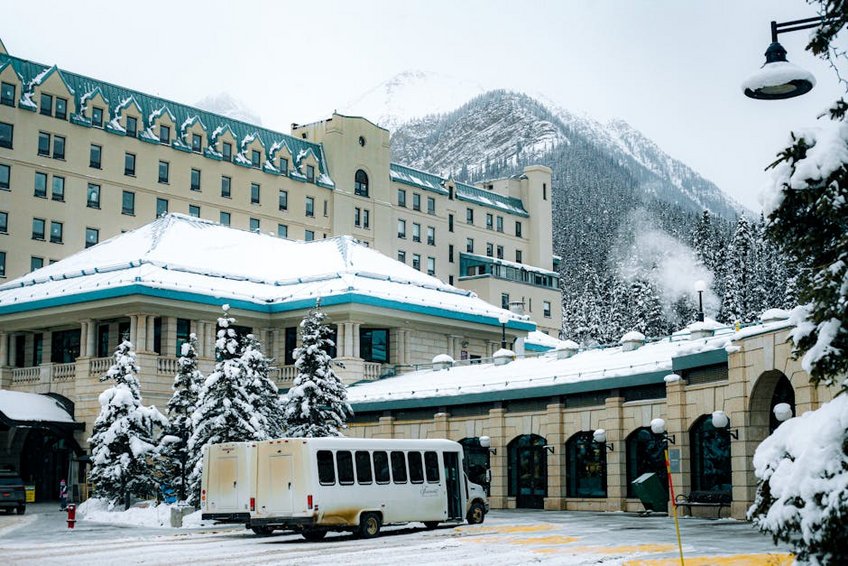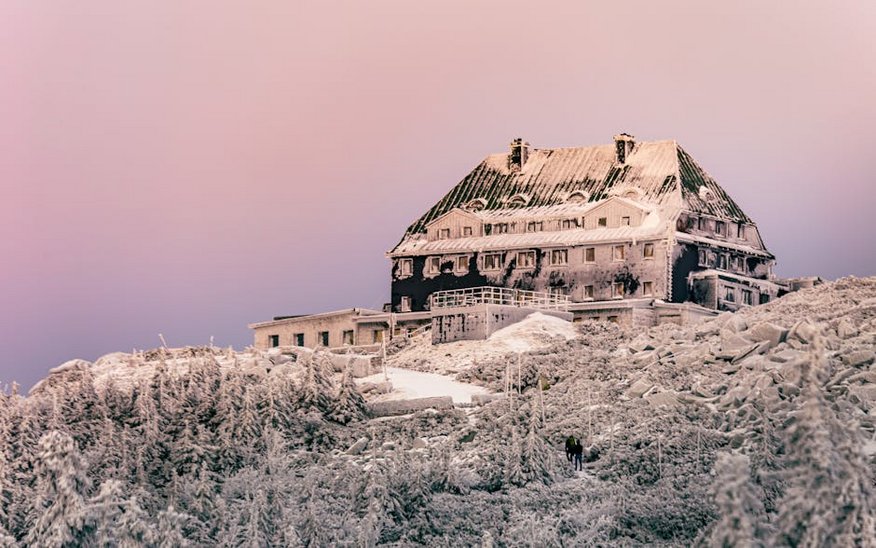Ice Hotel Stays: Your Ultimate Guide to Sleeping in Frozen Luxury
Imagine waking up in a room sculpted entirely from ice and snow, with intricate carvings glowing in the soft light. Ice hotel stays offer one of the most unique travel experiences on the planet, combining adventure with luxury in some of the world’s coldest destinations. These temporary marvels are rebuilt annually using thousands of tons of ice and snow, featuring breathtaking art installations and sub-zero temperatures that will test your comfort zone. You’ll sleep on ice beds covered with reindeer skins and thermal sleeping bags, creating memories that last long after you’ve thawed out. From the aurora-lit skies of Scandinavia to the winter wonderlands of North America, ice hotel stays attract couples seeking romance, adventure enthusiasts craving novelty, and travelers looking for Instagram-worthy moments. This comprehensive guide covers everything you need to know about planning, experiencing, and surviving your first frozen accommodation adventure. Whether you’re celebrating a special occasion or simply seeking the extraordinary, ice hotel stays deliver an unforgettable blend of challenge and charm that redefines winter travel.
Ice Hotel Stays Essential Information – Understanding the Basics
Before booking your frozen adventure, it’s crucial to understand what ice hotel stays actually entail. These are not conventional hotels with ice themes but structures built entirely from snow and ice each winter, typically melting away in spring. The concept originated in Sweden in the 1980s and has since spread to Canada, Finland, Norway, and other cold-climate destinations. You’ll find everything from ice sculptures and ice bars to ice chapels and ice bedrooms, with temperatures consistently below freezing. Modern ice hotels have evolved to include heated facilities nearby for comfort breaks, but the sleeping areas remain authentically icy. The construction process involves spraying snow onto giant molds or carving directly from river ice, with artists creating stunning interiors during a brief window before opening. Understanding these fundamentals helps set realistic expectations for your ice hotel stays, ensuring you appreciate the temporary nature and artistic effort behind these frozen palaces.
What Are Ice Hotels? – A Detailed Explanation
- Ice hotels are temporary structures built entirely from snow and ice, typically operating only during winter months when temperatures remain below freezing. They feature bedrooms with ice beds, common areas with ice sculptures, and often include ice bars serving drinks in ice glasses.
- The architectural process involves harvesting ice from nearby rivers or creating artificial snow, which is then sculpted into rooms and artistic features. Most ice hotels require annual reconstruction since they melt in spring, though some newer versions use refrigeration for year-round operation.
- Accommodation ranges from basic ice rooms to luxurious suites with elaborate ice art, but all share the characteristic of sub-zero sleeping conditions mitigated by specialized thermal sleeping systems and reindeer skin insulation.
- Budget options start around $200 per night for basic ice rooms, often including thermal sleeping bags but fewer amenities. These are perfect for adventure seekers who prioritize the ice experience over luxury.
- Mid-range packages cost $300-$500 nightly, typically including ice room accommodation, breakfast, access to heated facilities, and sometimes a welcome drink at the ice bar.
- Luxury ice hotel stays can exceed $800 per night for artist-designed suites with private saunas, gourmet dining, and guided northern lights tours, offering full-service winter experiences.
- Official Icehotel Sweden Website
- Lonely Planet Guide to Ice Hotels
History and Evolution of Frozen Accommodations
The first ice hotel opened in Jukkasjärvi, Sweden in 1989, initially as a seasonal art exhibition that visitors wanted to sleep in. This accidental innovation sparked a global trend, with Quebec’s Hôtel de Glace opening in 2001 and Norway’s Alta Igloo Hotel following. Early versions were basic ice shelters, but modern iterations include electricity, WiFi, and adjacent heated facilities. The evolution has seen ice hotel stays become more comfortable without losing their adventurous edge, with temperature-controlled sleeping bags and expert guidance ensuring safety. Artistic elements have grown increasingly sophisticated, with international artists competing to design suites, making each visit unique. This history highlights how ice hotel stays have transformed from novelty experiments to established winter tourism attractions.
Ice Hotel Stays Planning Your Trip – Timing and Budget Considerations
Planning your ice hotel stays requires careful timing and budget allocation, as these experiences are seasonal and premium-priced. The optimal booking window is 6-12 months in advance, especially for popular dates around holidays or northern lights seasons. You’ll need to consider not just the hotel cost but also flights to remote locations, cold-weather gear rental, and activities like dog sledding or ice sculpting. Budget between $200-$800 per night depending on the hotel and room type, with package deals often including meals and adventures. Travel insurance is essential since weather disruptions are common in polar regions, and you’ll want coverage for trip cancellations. This section helps you navigate the logistical challenges of ice hotel stays, ensuring you secure the best dates and value for your frozen getaway.
Best Time to Visit Ice Hotels
The ideal period for ice hotel stays is between December and March, when temperatures remain consistently below freezing to maintain structural integrity. January and February offer the coldest conditions and darkest skies, perfect for northern lights viewing in Scandinavian locations. However, December provides festive atmospheres with Christmas markets, while March brings longer daylight hours for daytime activities. Avoid late season visits in April when melting risks occur, and research specific hotel opening dates since they vary by location. Consider your tolerance for cold; temperatures can drop to -30°C (-22°F) in peak winter, requiring serious cold-weather preparation.
Budget Planning and Costs for Frozen Accommodations
Essential Preparation Checklist
Preparing for ice hotel stays involves more than typical vacation packing. You’ll need thermal base layers, insulated boots, and accessories like hats and gloves designed for extreme cold. Most hotels provide extreme cold weather sleeping bags, but verify inclusions when booking. Practice sleeping in cool conditions beforehand to acclimatize, and avoid alcohol before bed since it impairs body temperature regulation. Pack lip balm and moisturizer for dry air, and bring camera equipment capable of functioning in low temperatures. This preparation ensures you stay comfortable and safe during your sub-zero adventure.

Ice Hotel Stays Experience – What to Expect During Your Visit
Your actual ice hotel stays experience begins with an orientation session where staff explain safety procedures and sleeping techniques. You’ll store luggage in heated facilities and change into thermal wear before entering the ice areas. Evenings typically involve exploring the ice sculptures, enjoying drinks at the ice bar, and participating in winter activities before retiring to your room. The silence inside an ice hotel is profound, with temperatures around -5°C to -8°C (23°F to 18°F) creating a unique acoustic environment. Most guests report surprisingly comfortable sleep thanks to specialized sleeping systems, though the novelty often leads to shorter nights. Morning brings the ritual of warming up in saunas or hot tubs, followed by hearty breakfasts. This section prepares you for the sensory journey of ice hotel stays, from the initial chill to the warm camaraderie among guests.
A Night in an Ice Hotel – The Sleeping Experience
Sleeping in an ice hotel involves specific techniques to stay warm throughout the night. You’ll receive instructions to wear minimal base layers inside the sleeping bag to allow body heat circulation, with hoods drawn tight against heat loss. The ice beds feel surprisingly comfortable with thick reindeer skins providing insulation, though the cold air on your face remains a constant reminder of your environment. Most guests wake periodically from the novelty or cold, but the experience is generally manageable with proper gear. The unique aspect is waking to see your breath crystallize and the ice walls glowing with morning light, creating unforgettable memories. This overnight adventure tests your limits while offering profound connection with winter elements.
Activities and Amenities Beyond the Ice Rooms
Ice hotel stays offer far more than just frozen accommodation; they serve as hubs for winter adventures. Typical amenities include ice bars where drinks are served in ice glasses, ice chapels for weddings, and sometimes ice cinemas or galleries. Daytime activities might include dog sledding, snowmobile tours, ice fishing, or northern lights chasing depending on location. Many properties offer saunas, hot tubs, or heated lounges for warming breaks between ice experiences. These additional elements transform ice hotel stays into comprehensive winter vacations, providing balance between the challenging ice environments and comfortable retreats.
Pros and Cons of Ice Hotel Stays
Ice hotel stays offer unique advantages like unparalleled novelty, incredible photo opportunities, and bragging rights for adventurous travelers. The artistic environments provide constantly changing scenery, and the remote locations often feature spectacular natural phenomena like auroras. However, challenges include discomfort for cold-sensitive individuals, limited privacy in some designs, and higher costs compared to conventional hotels. The temporary nature means you can’t revisit the same room, and weather dependencies can disrupt travel plans. Weighing these factors helps determine if ice hotel stays match your travel style and tolerance for adventure.
Ice Hotel Stays Practical Travel Information – Logistics and Accommodation
Navigating the practical aspects of ice hotel stays requires understanding transportation to remote locations and alternative lodging options. Most ice hotels are situated in rural areas far from major airports, requiring additional transfers by train, bus, or rental car. You’ll need to plan for limited services in these regions, with fewer dining choices and essential supplies. While the ice accommodation is the main attraction, most guests combine it with stays in nearby heated hotels for comfort, especially for multi-night visits. This section provides detailed logistics for reaching and enjoying ice hotel stays, including transportation options, regional considerations, and backup plans for extreme weather conditions.
| Ice Hotel | Location | Price Range (USD per night) | Key Features |
|---|---|---|---|
| Icehotel Sweden | Jukkasjärvi, Sweden | $250-$700 | World’s first ice hotel, aurora views, ice chapel |
| Hôtel de Glace | Quebec, Canada | $200-$600 | North America’s only ice hotel, near Quebec City |
| SnowHotel Finland | Kemi, Finland | $180-$500 | Ice restaurant, snow castle, Arctic ocean views |
| Alta Igloo Hotel | Alta, Norway | $300-$800 | Northern lights guarantee, dog sledding packages |


